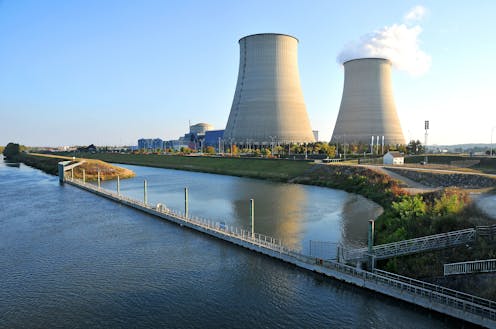Engineering students explore how to ethically design and locate nuclear facilities in this college course
- Written by Aditi Verma, Assistant Professor of Nuclear Engineering and Radiological Sciences, University of Michigan

What materials does the course feature?
We use virtual reality models of both fission and fusion reactors, along with models of energy system facilities. AI image generators are helpful[14] for rapid prototyping – we have used these in class with students and in workshops.
This year, we are also inviting students to do some hands-on prototyping with scrap materials for a project on nuclear energy systems.
What will the course prepare students to do?
Students leave the course understanding that community engagement is an essential – not optional – component of good design. We equip students to approach technology use and development[15] with users’ needs and concerns in mind.
Specifically, they learn how to engage with and observe communities using ethical, respectful methods that align with the university’s engineering research standards.
What’s a critical lesson from the course?
As instructors, we have an opportunity – and probably also an obligation – to learn from students as much as we are teaching them course content. Gen Z students have grown up with environmental and social concerns as centerpieces of their media diets, and we’ve noticed that they tend to be more strongly invested in these topics than previous generations of engineering students.
References
- ^ Uncommon Courses (theconversation.com)
- ^ virtual reality (theconversation.com)
- ^ participatory design in her research (ners.engin.umich.edu)
- ^ teaching ethics and design (techcom.engin.umich.edu)
- ^ through ethical concerns (www.ans.org)
- ^ fusion energy systems (theconversation.com)
- ^ nuclear microreactors (inl.gov)
- ^ outcomes the community would like to see (www.iaea.org)
- ^ a sociotechnical engineer (theconversation.com)
- ^ Fusion energy systems (www.nytimes.com)
- ^ fission microreactors (www.nytimes.com)
- ^ are smaller (www.nytimes.com)
- ^ Thomas Barwick/DigitalVision via Getty Images (www.gettyimages.com)
- ^ AI image generators are helpful (theconversation.com)
- ^ approach technology use and development (theconversation.com)
Authors: Aditi Verma, Assistant Professor of Nuclear Engineering and Radiological Sciences, University of Michigan


